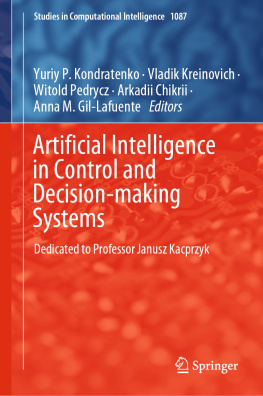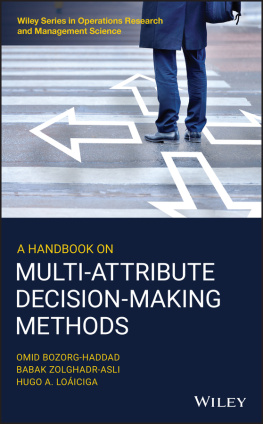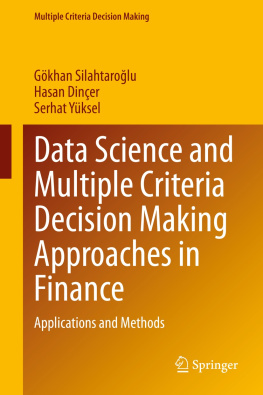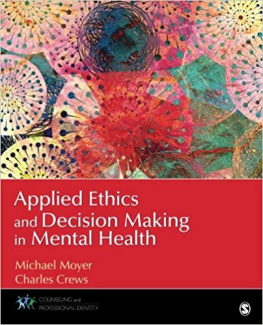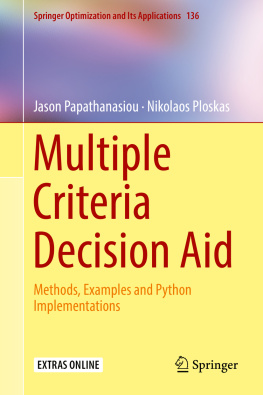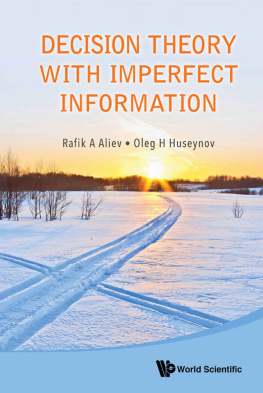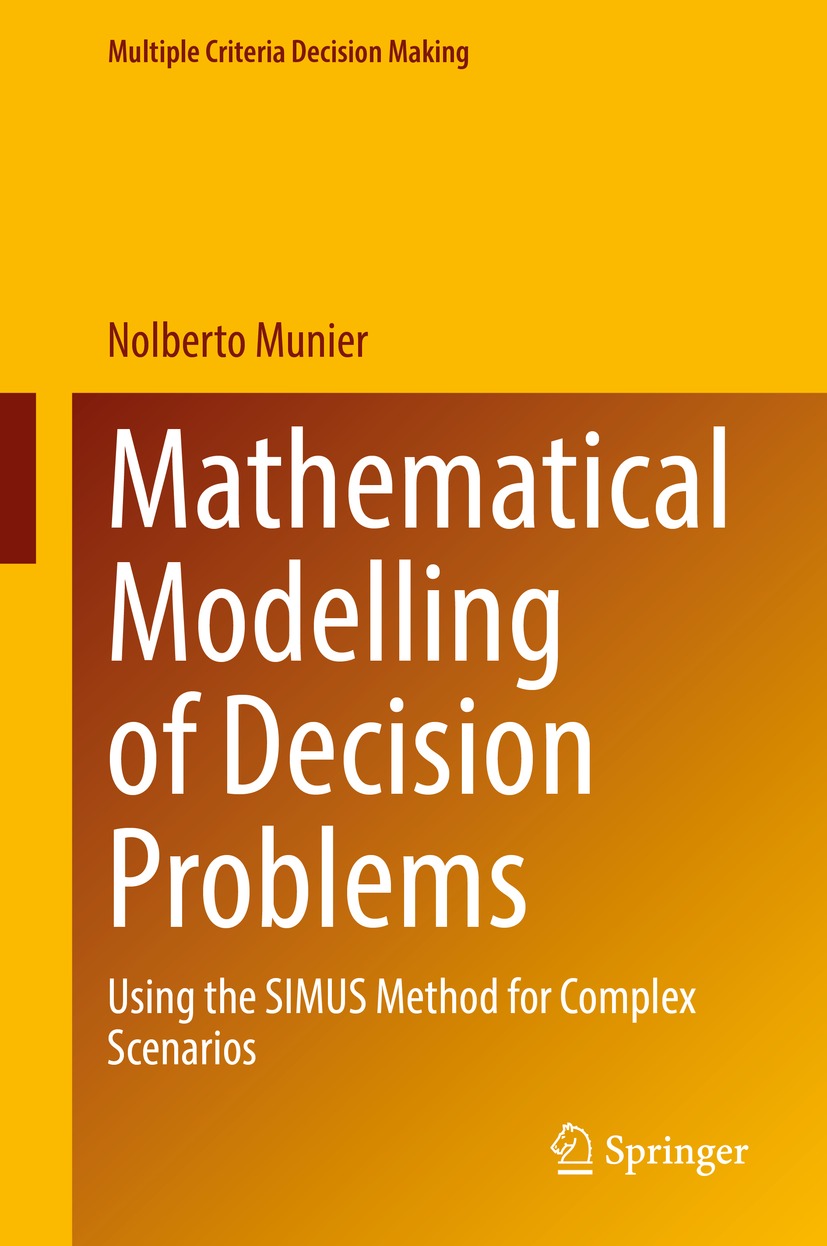Nolberto Munier
Universitat Politcnica de Valncia, Valencia, Spain
ISSN 2366-0023 e-ISSN 2366-0031
Multiple Criteria Decision Making
ISBN 978-3-030-82346-7 e-ISBN 978-3-030-82347-4
https://doi.org/10.1007/978-3-030-82347-4
The Editor(s) (if applicable) and The Author(s), under exclusive license to Springer Nature Switzerland AG 2021
This work is subject to copyright. All rights are solely and exclusively licensed by the Publisher, whether the whole or part of the material is concerned, specifically the rights of translation, reprinting, reuse of illustrations, recitation, broadcasting, reproduction on microfilms or in any other physical way, and transmission or information storage and retrieval, electronic adaptation, computer software, or by similar or dissimilar methodology now known or hereafter developed.
The use of general descriptive names, registered names, trademarks, service marks, etc. in this publication does not imply, even in the absence of a specific statement, that such names are exempt from the relevant protective laws and regulations and therefore free for general use.
The publisher, the authors and the editors are safe to assume that the advice and information in this book are believed to be true and accurate at the date of publication. Neither the publisher nor the authors or the editors give a warranty, expressed or implied, with respect to the material contained herein or for any errors or omissions that may have been made. The publisher remains neutral with regard to jurisdictional claims in published maps and institutional affiliations.
This Springer imprint is published by the registered company Springer Nature Switzerland AG
The registered company address is: Gewerbestrasse 11, 6330 Cham, Switzerland
Preface
This book aims at being a guide and a manual for modeling complex problems in multi-criteria decision-making (MCDM). As a guide it aspires to steer the practitioner to consider the realities of real-world scenarios in its modeling, and as a manual, it offers many hints and examples of how to input those realities in the initial decision matrix. The goal is unique: to build a decision matrix that replicates reality as much as possible. Once this matrix is built, the decision-maker (DM) may choose, among more than a hundred MCDM methods, the one that best adjusts to the matrix requirements and conditions.
The cases in this book, mostly actual and rather complicated because they are taken from real-life scenarios, address different fields, aspects, and characteristics, and are solved using the SIMUS (sequential interactive modeling for urban systems) method (Munier, 2011), but of course, the reader may utilize any other method that he or she considers can tackle the problem.
SIMUS is a mathematical programming method, grounded in linear programming (LP), and developed to work with multiple objectives, and, thus, differentiating it from pure LP that is mono-objective.
It is known that LP finds optimums - if they exist - however, SIMUS works under the principle of reaching a consensus or compromise solution, not optimum results, which incidentally are normally inexistent in multiple objectives scenarios. Due to this, it is a heuristic method.
This is not a mathematical book, the aspect of which can be confirmed just by glancing at its content. There is a whole chapter explaining SIMUS, the principles, logic, and fundamentals of which are justified using simple graphics. Scenarios are addressed, examined, and solved using common sense and reasoning, as happens in the real world. In addition to the different cases, the author illustrates his comments by referring to real-life situations and circumstances, mostly based on his experience.
Examining many papers and even books where each of the numerous existing methods is described and exemplified, this author noticed a common feature. They thoroughly explain the characteristics of each method, its mathematical foundation, its competence, and how to sort some problems that may arise. All methods start with the building of the initial decision matrix - with the possible exemption of the analytical hierarchy process (AHP) (Saaty, 1994) and analytic network process (ANP) (Saaty, 1996), since both build the matrix following their own principles, and from it follow different platforms, such as based on preferences, outranking, and distance to the ideal solution.
(See Ishizaka in Appendix, under the Preferences label).
Recommended reading: Salo et al. (1992, 1997).
Some cases, other than demonstrating the treatment of a special characteristic of a scenario, also comment on sensitivity analysis (SA), for the same problem; SA is thoroughly explained in Sect..
All MCDM methods follow sound algorithms that try to find the best solution for a certain scenario; however, none determines if a solution exists. Thus, opposite criteria are considered for analysis, when it could be that one of them precludes others. That is, we cannot have a solution producing the largest benefits and the lowest cost; it is one or the other or a balance between them. For this reason, none of these methods look for optimality but for a compromise solution (Zeleny, 1974). Even with this consideration there is no guarantee that a problem has a solution; however, all methods always find one. In reality, it appears that what they find is the result of following an algorithm. This undoubtedly suggests a disconnection with reality.
(See also Bosque-Sendra, Buchanan, Zion-Wallenius, Chap. , and Choo, in the Appendix, under the Results label.)
This is only one of the issues; probably the most important is modeling, that is, expressing in mathematical language the characteristics, demands, and special features of a problem. From the beginning until our time, modeling is done assuming normally a great simplification of the scenario, by ignoring certain characteristics that may be essential in finding, if not the best answer, at least a solution derived by considering these features as much as possible. (See Barba-Romero, MIT, in Appendix under the Modelling label.)


